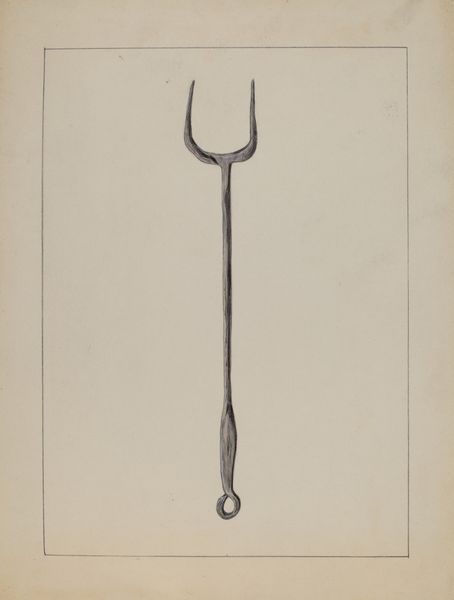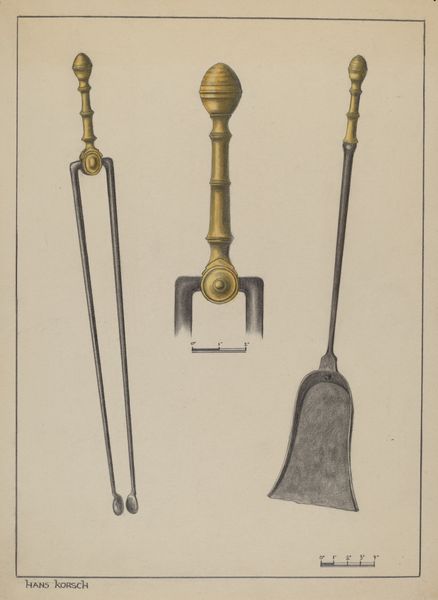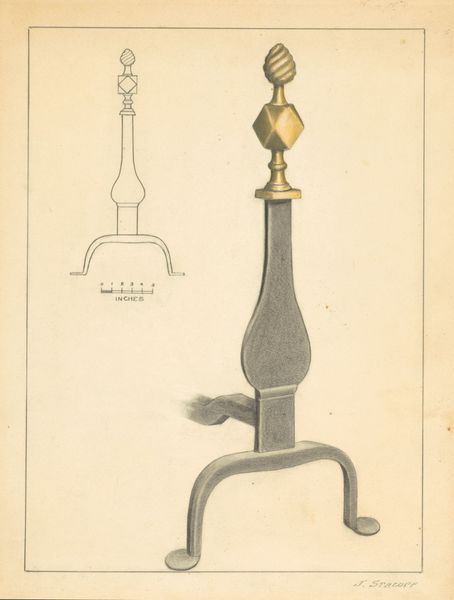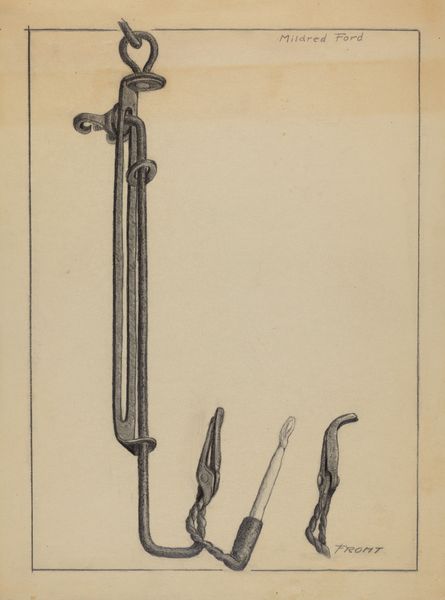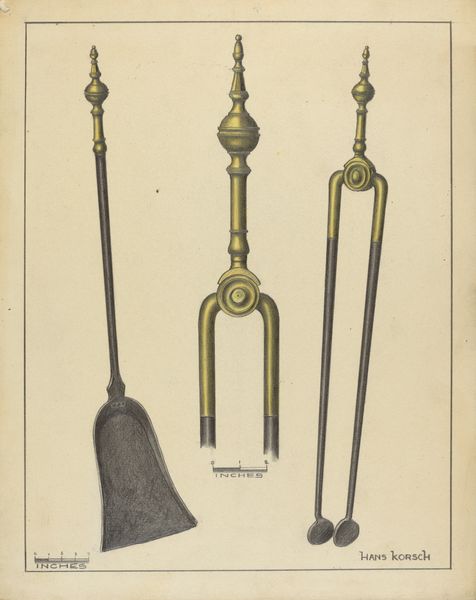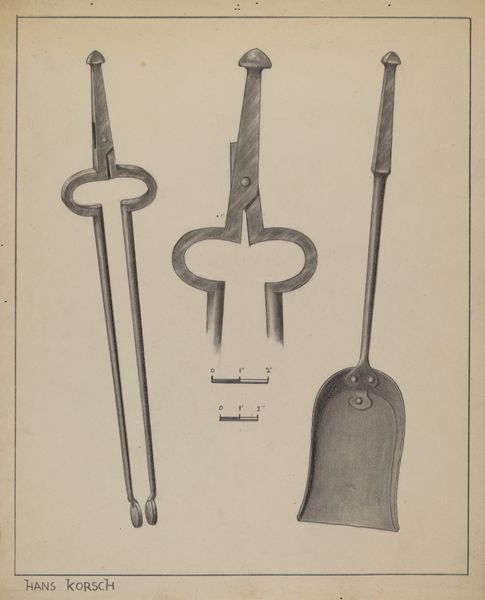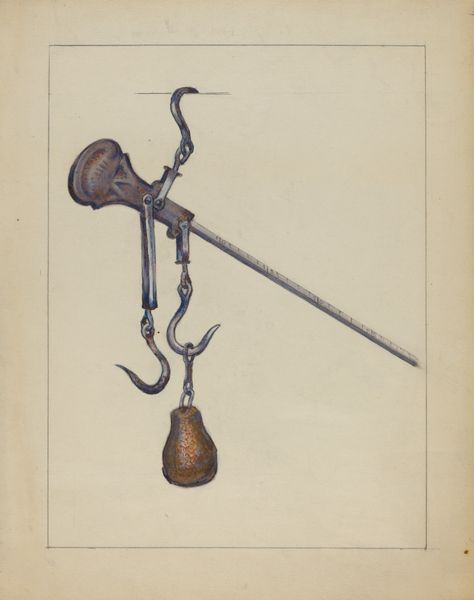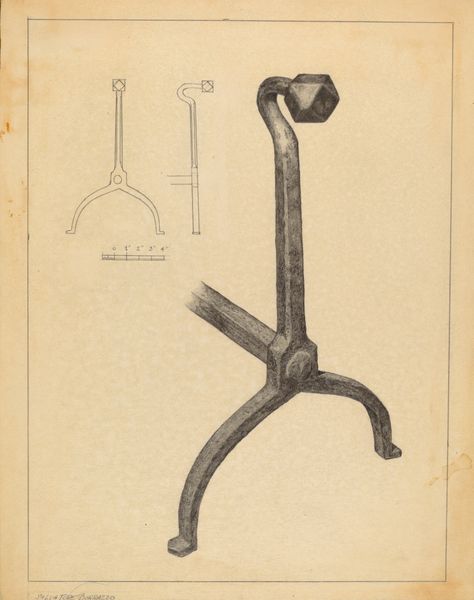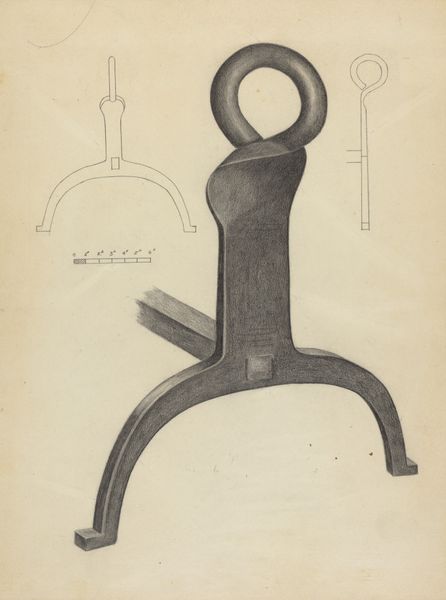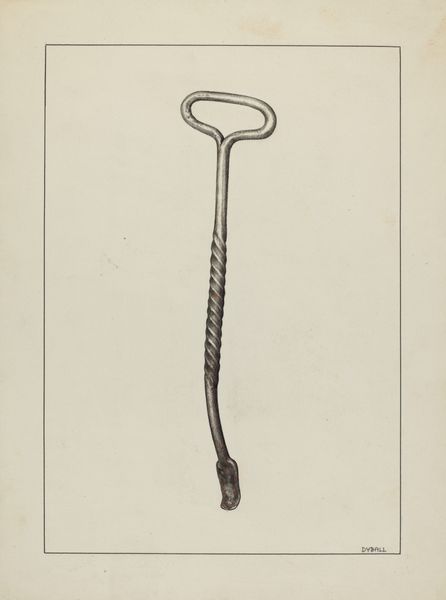
drawing, paper, pencil
#
pencil drawn
#
drawing
#
aged paper
#
toned paper
#
light pencil work
#
pencil sketch
#
old engraving style
#
sketch book
#
paper
#
personal sketchbook
#
pencil
#
sketchbook drawing
#
sketchbook art
#
realism
Dimensions: overall: 30.4 x 22.8 cm (11 15/16 x 9 in.) Original IAD Object: 11 1/2" high
Copyright: National Gallery of Art: CC0 1.0
Curator: This is Mildred Ford’s "Rush Light Stand," a pencil drawing from around 1936. What strikes you about it? Editor: The stark simplicity, actually. The muted tones and delicate lines give it a somber, almost antique feel. It really evokes a sense of the past. Curator: Right. Ford’s process highlights everyday tools, domestic objects, and things typically overlooked. Rush lights, for example, provided a cheap source of light for many but involved extensive manual labor to harvest, prepare, and burn the rushes. It’s a beautiful representation of humble origins. Editor: I see what you mean. Structurally, it's quite basic. There’s a clear foreground and the contrast effectively brings the stand into focus. The texture achieved with just pencil on paper is really something else, giving the metal a kind of weight and substance. Curator: Absolutely. And think about the context – 1936, during the Depression. Representing utilitarian objects speaks volumes about value, resourcefulness, and the dignity of labor in a difficult time. The materials here, like the inexpensive rushes and basic iron, link directly to specific working-class lives. Editor: The formal elements emphasize the functional aspect: the precise rendering of the holder's jaws and the steady, vertical support all suggest purposefulness. The artist clearly appreciated form in utilitarian design. It’s a solid, grounded piece aesthetically and physically, isn’t it? Curator: I think that is a perfect way to view it. Ford used the materials available and elevated this tool beyond mere function. I appreciate her commentary on value and working-class aesthetics during a difficult time. Editor: For me, reflecting on the design and skillful use of form opens my eyes. I understand how something as simple as line and shadow can imbue an object with so much presence and history.
Comments
No comments
Be the first to comment and join the conversation on the ultimate creative platform.
